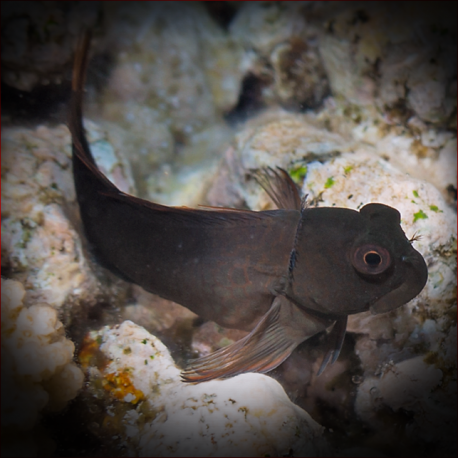More info
Datasheet
| Minimum Tank Size | 300 litres / 79.25 US gallons |
| Maximum Size | 9.0cm / 3.54inches |
| Reef Compatible | Reef safe with caution |
| Temperament | Might be aggressive towards food competitors |
| Temperature | 22.2°C / 71.96°F - 25.6°C / 78.08°F |
| Specific Gravity | 1.020-1.025 |
| Carbonate Hardness | 8-12 |
| pH | 8.1-8.4 |
General Description
The Chestnut eyelash-blenny, scientifically known as Cirripectes castaneus, belongs to the Blenniidae family, specifically the genus Cirripectes. These blennies possess an oblong shape with a long dorsal fin and are relatively small, reaching a maximum size of around 9.0cm.
Aquarium Suitability
With an average hardiness level, this species is suitable for aquariums, but with caution. They are known to be aggressive towards food competitors, hence requiring special attention when housed with other fish. Their minimum tank size requirement is 300 liters, and they are recommended to be kept in pairs (male and female) in a well-established aquarium with ample algae for grazing.
Care and Hardiness
Chestnut eyelash-blennies thrive in water conditions with a pH range of 8.1-8.4, a specific gravity of 1.020-1.025, a temperature range of 22.2-25.6°C, and a carbonate hardness (KH) of 8-12. They feed on a diet consisting of macroalgae (e.g., seaweed/nori), microalgae (e.g., spirulina), and zooplankton like Cyclops and pods.
Reef Suitability
Considered reef safe with caution, these blennies can be kept in a reef aquarium. However, their potential aggression towards food competitors should be carefully monitored when placed in a reef environment.
Aquarium Setup
When setting up an aquarium for Chestnut eyelash-blennies, ensure the presence of rocks and stones with sufficient algae for grazing. Supplement their diet with algae-rich foods like Spirulina, especially if natural algae levels are insufficient in the tank.
Behaviour
Known to have a fun personality, Chestnut eyelash-blennies can make interesting additions to both small and large aquariums. However, their territorial and potentially aggressive behavior towards other fish during feeding times should be taken into account.
Feeding and Diet
These blennies predominantly feed on algae, making macroalgae and microalgae essential components of their diet. Additionally, offering zooplankton such as Cyclops and pods will help provide them with a balanced nutritional intake.
Habitat and Distribution
In the wild, Chestnut eyelash-blennies are found in the Indo-West Pacific region, ranging from the Red Sea to Tonga, and as far north as southern Japan and as far south as Lord Howe Island. They can also be spotted in additional locations such as Palau, Ifaluk, and Kapingamarangi in Micronesia.

